
Piezo Nanomotion & Control and Metrology Products by CoreMorrow
PZT Piezo Ceramics
CoreMorrow provides thousands of PZT piezo ceramics, which can generate micro - or nano-scale displacement after applied to voltage.
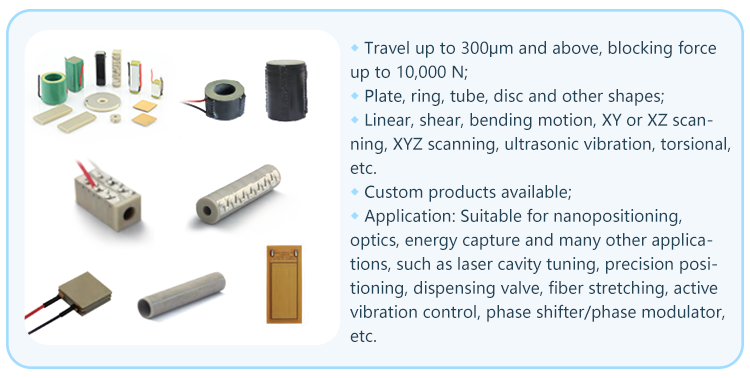
Piezo Actuator (Preloaded Piezo Stacks)
Preloaded piezo actuators are piezo stack actuators with mechanical load and casing, which can not only output the performance of piezo stacks, but also protect them and make them suitable for dynamic applications.It can produce linear motion, or linear contraction motion.
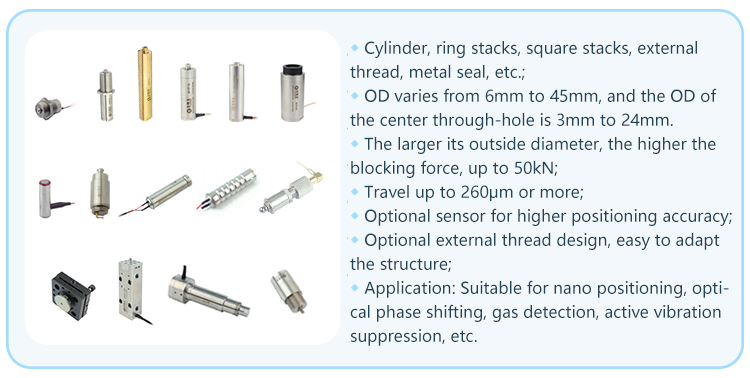
Amplified Piezo Actuators
The amplified piezo actuators adopt amplifying mechanism design to amplify the displacement of piezo stacks and output. CoreMorrow can also design and produce piezo motor drive mechanisms for use at resonant frequencies.
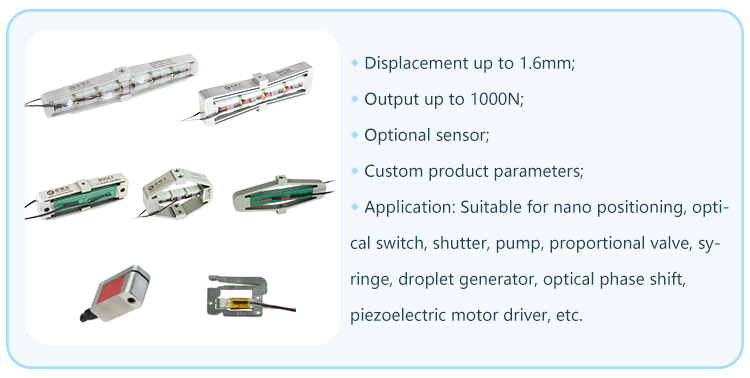
Piezo Clamp
According to the requirements of the automatic lead bonding machine, CoreMorrow designed and produced a series of wire clamps for the clamping of gold wire, silver wire and other fine leads, which has simple structure, fast response speed and high resolution. In addition, we have also designed and produced piezo clamp for other items.
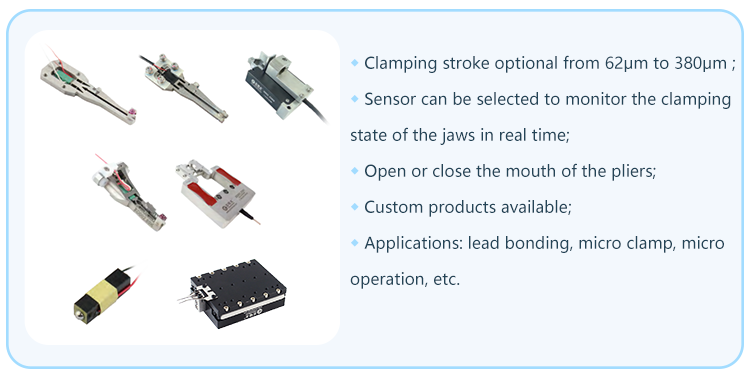
Piezo Fiber Stretchers
Piezo fiber stretcher is designed for fiber stretching applications. Its principle is to cause the hinge structure outward expansion by the action of piezo stacks, thereby stretching the optical fiber wound in the outer diameter groove.
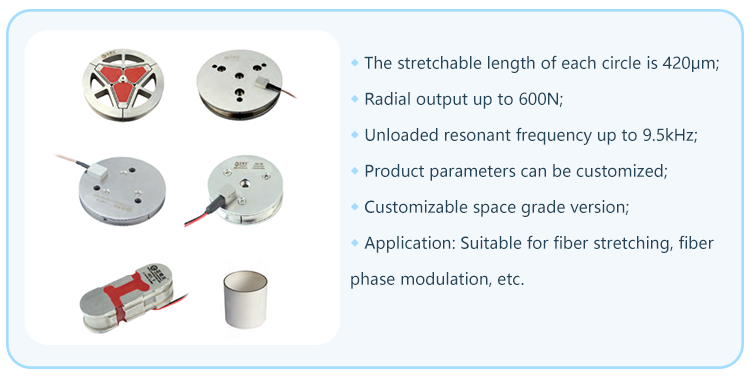
Piezo Micrometers
Piezo micrometer combines piezo micromotion stage with a micrometer, which could be coarsely adjusted by micrometer, and finely adjusted by piezo stage, a loading platform is available.
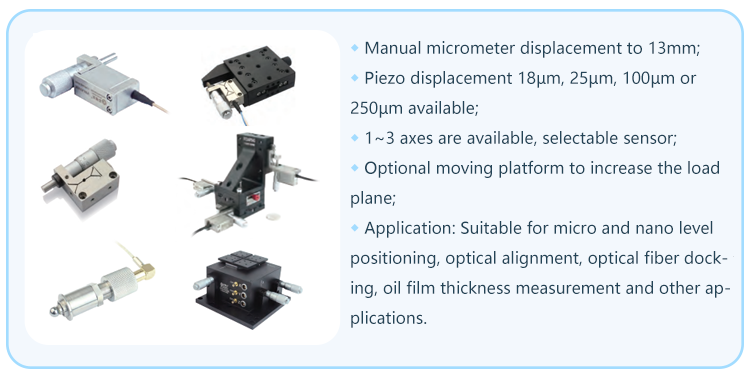
Piezo Nanopositioning Stages
Piezo nanopositioning stages are drived by piezo actuators, combined with flexible hinge mechanism to realize X/Z/XY/ XZ/XYZ motion. It has the characteristics of small size, no friction, fast response, high resolution, large bearing capacity and high reliability,etc. and plays a vital role in the field of precision positioning.
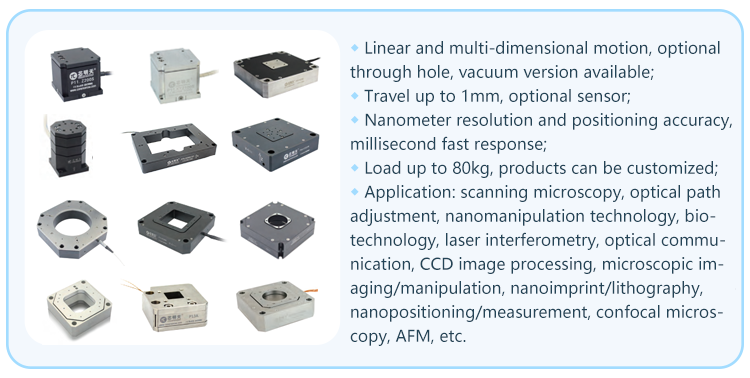
6-Axis Piezo Nanopositioning Stage
The 6-axis piezoelectric nano-positioning platform is a piezo nano-positioning platform that can generate θx, θy, θz, X, Y, Z 6 dimensional motion, which can be divided into series and parallel two structural modes, and the stroke can be divided into micron travel and millimeter travel, which can achieve nanoscale resolution and positioning accuracy.
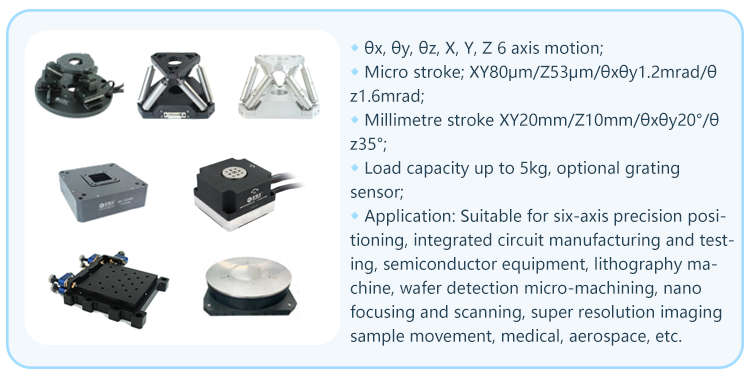
Fast Tool Positioning Stage
Fast tool positioning stage is designed for ultra-precision turning. It has the characteristics of high frequency, large stiffness, high precision to drive the tool to quickly feed in the direction of motion, achieving precision machining of complex surface parts or structures.
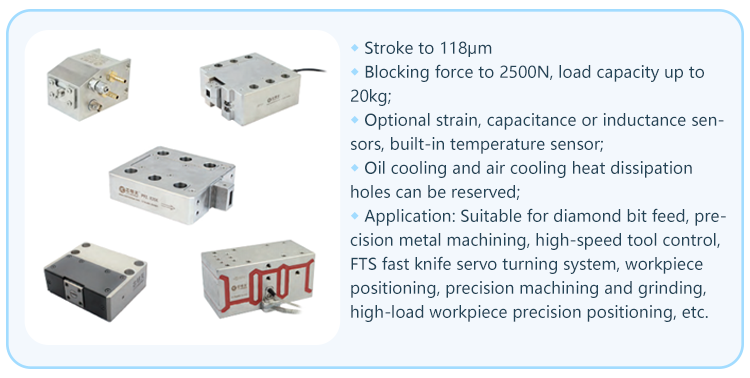
Piezo Objective Scanner
Piezo objective scanner is specially designed for focusing and microscopy of objective lens. It is designed with a frictionless flexible hinge parallel guide mechanism design, and has ultra-high focus stability. The piezo objective scanner can be integrated into the microscope inspection/measurement or the observation device to improve accuracy, and can be used in conjunction with a variety of high-resolution microscopes.
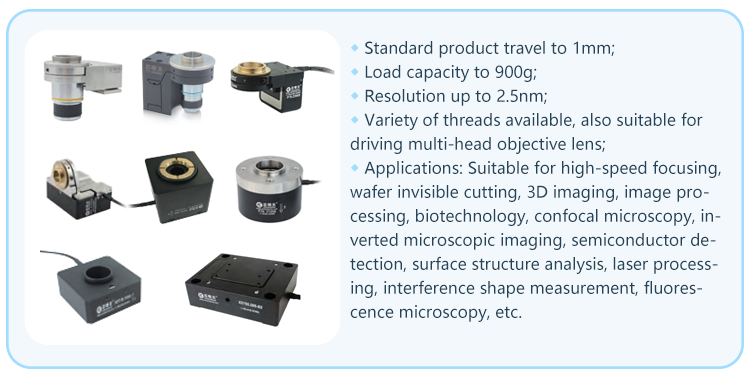
Piezo Tip/Tilt/Rotation Stage
Based on piezo ceramics as the driving source, Piezo Z and Tip/Tilt/Rotation Stages can generate θx, θy or/and θz motion, a piezo motion platform with linear (or multi-dimensional linear) motion can also be equipped with it. It has nanoarc deflection accuracy, high stability and fast response speed.
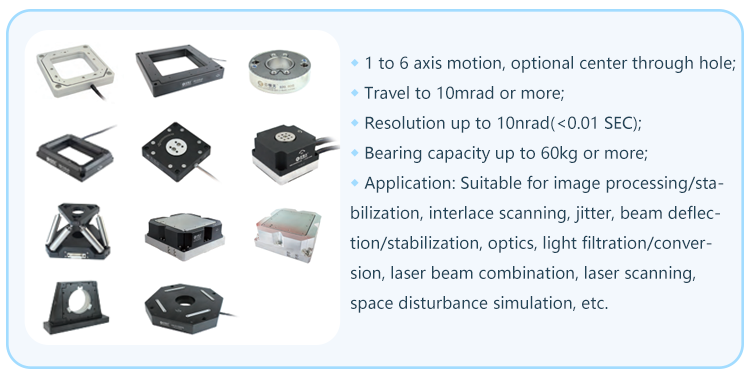
Piezo Tip/ Tilt Platform
Using piezo actuators as the driving source, Piezo Tip/ Tilt Platform can generate θx, θy tilt, or also Z motion, which is used to drive the deflection of the reflective/ transmissive lens to change the direction of the optical path.
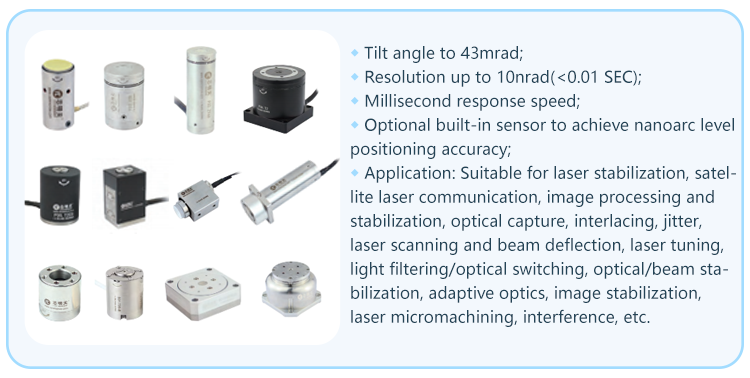
Piezo Mirror Mounts
The piezo mirror mount is composed of two (or more) piezo screw actuators and the frame. The piezo screw actuators can produce linear millimeter-level motion to drive the frame to produce θx and θy deflection motion. By increasing the number of piezo screw actuators, the motion axis can be increased, such as increasing the linear motion control. It can be used to drive reflective or transmission lenses of various sizes.
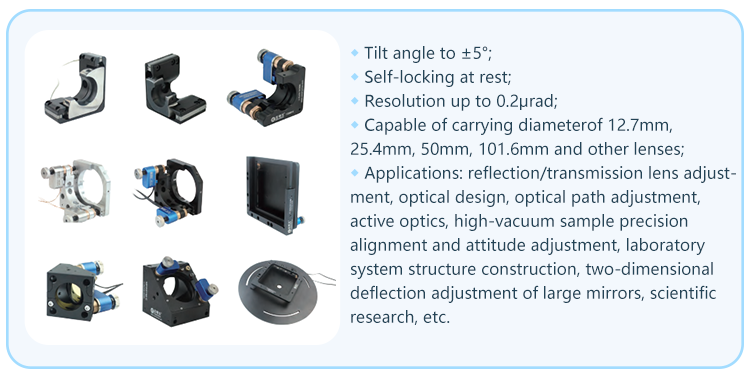
Piezo Linear Motor
Piezo linear piezo motor adopts stick-slip principle, to convert the linear micro-displacement generated by piezo ceramics into the macroscopic linear motion of the mechanical plane. The linear motion range can be up to 100mm.
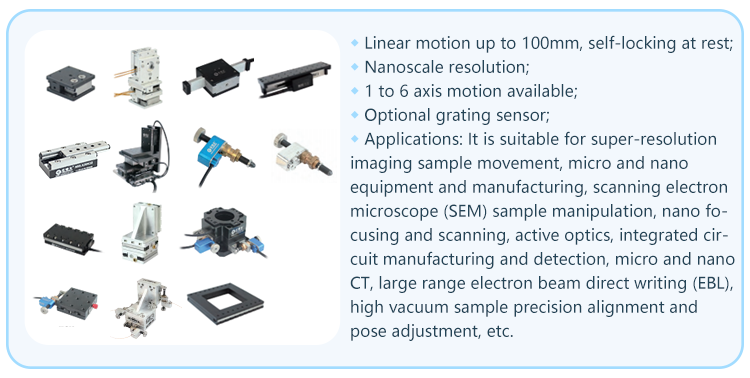
Piezo Angular Motor
The piezo angular motor adopts the stick-slip principle to convert the linear micro-displacement generated by piezo ceramics into the macroscopic angular motion of the mechanical plane, and the rotation angle can be up to 360°. The piezo angular motor includes piezo rotation motor, XY piezo tilting mirror, piezomotor modulation platform, etc.
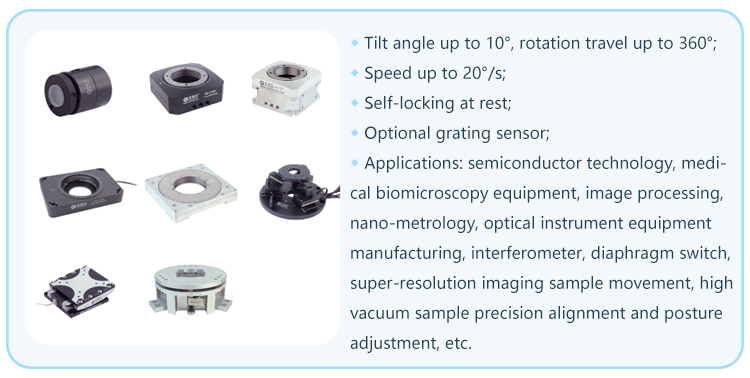
Ultrasonic Resonance Piezo Motor
The ultrasonic resonance piezo motor adopts the principle of piezo ultrasonic resonance to convert the high-frequency and linear micro-displacement generated by piezo ceramics into the macroscopic linear (or angular) motion of the mechanical plane, with a travel range of up to millimeter (or 360°). We can provide linear ultrasonic resonance stage and rotary ultrasonic resonance piezo motor stage, etc.
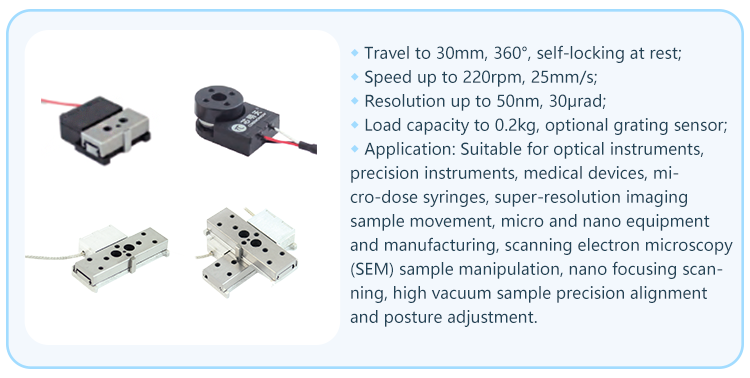
Piezo Nanoprobe Stage
Piezo nanoprobe stage is mainly used for probe position adjustment with nanometer precision in specific direction. The freedom of motion, stroke, number of nanoprobe table and number of probe module can be selected according to user needs.
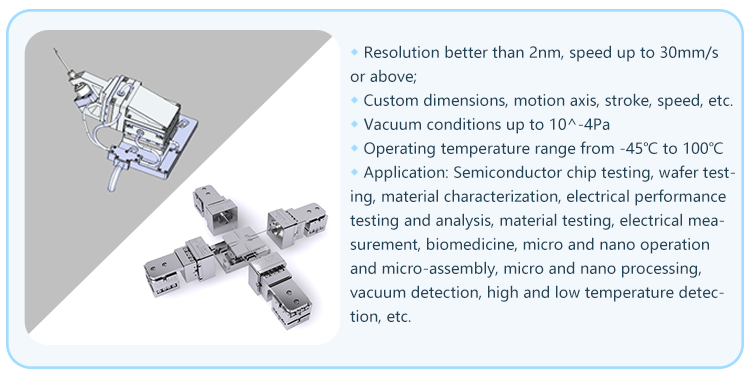
Piezo Controller
Piezo controller is to control by analog input or digital input, with power amplification function, and the output voltage and output frequency can be adjusted. It is used to drive the piezomotion products with piezo ceramics as the driving source, mainly to drive capacitive loads, also known as piezo ceramic controller, piezo ceramic drive power or piezo amplifier.
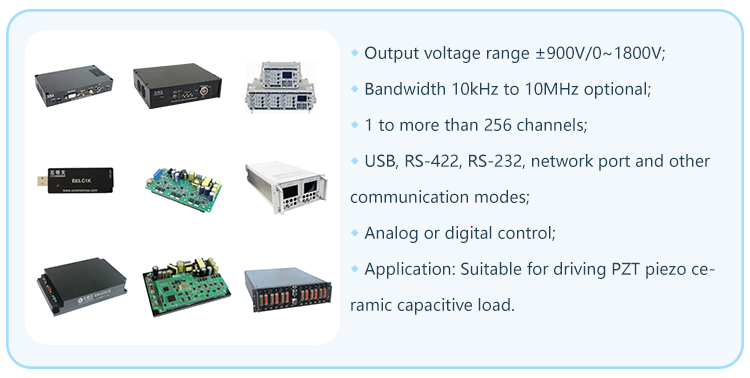
Capacitance Sensor/Micrometer
Capacitance sensor is a non-contact displacement measuring instrument, which is composed of capacitance sensing probe, sensing signal processing and power supply module.
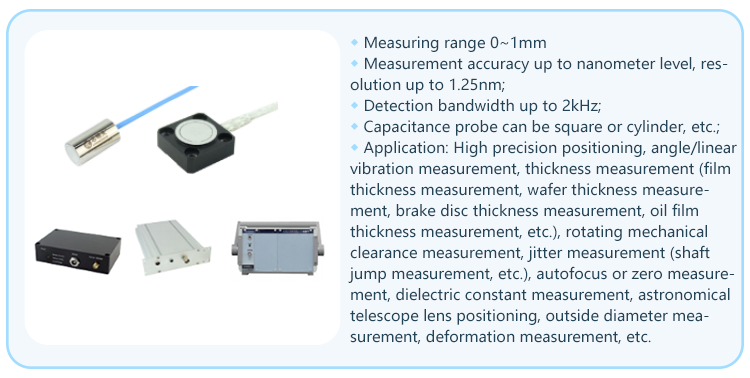
Inductance Micrometer
Inductance micrometer is a contact displacement measuring instrument. The inductance probe is in contact with the measured surface. When the measured surface moves, the inductance probe will expand, and the signal processing part will feedback voltage signal corresponding to the displacement.
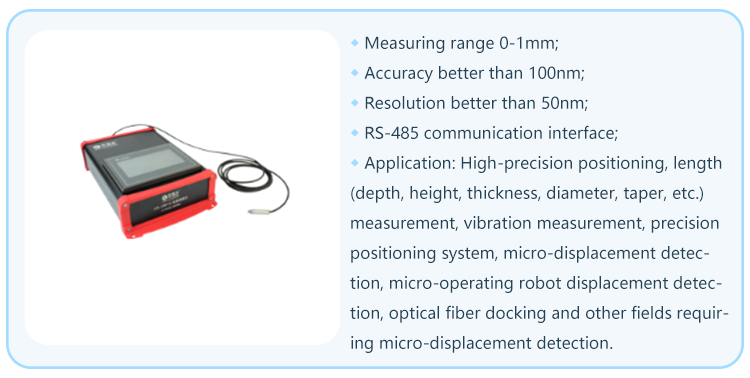
Strain Sensor
Strain sensors are mainly used to measure the deformation of a structural surface. When subjected to deformation force, the output voltage signal can also be used for force process monitoring. It can be used for indirect dynamic and quasi-static force measurement of stressed structures, and the relationship between force and strain is linear enough to effectively meet the requirements of accurate measurement and monitoring. When using strain for indirect measurement, the force split can be close to 99%, much higher than direct measurement.
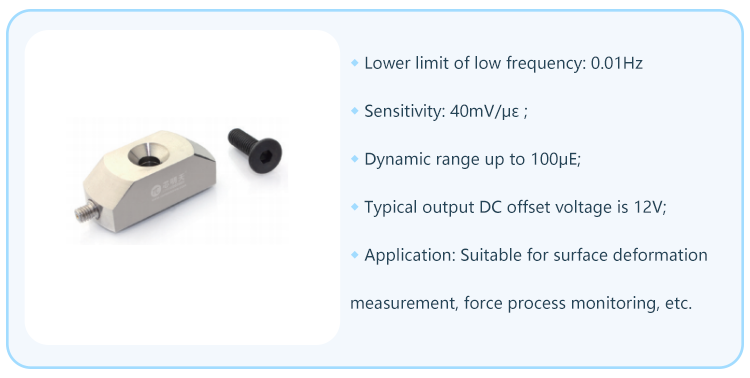
- Previous article:N25.T6K Piezo Motor Driven Tip/Tilt Stage
- Next article:H60.XYZTR5 Piezo Hexapod


